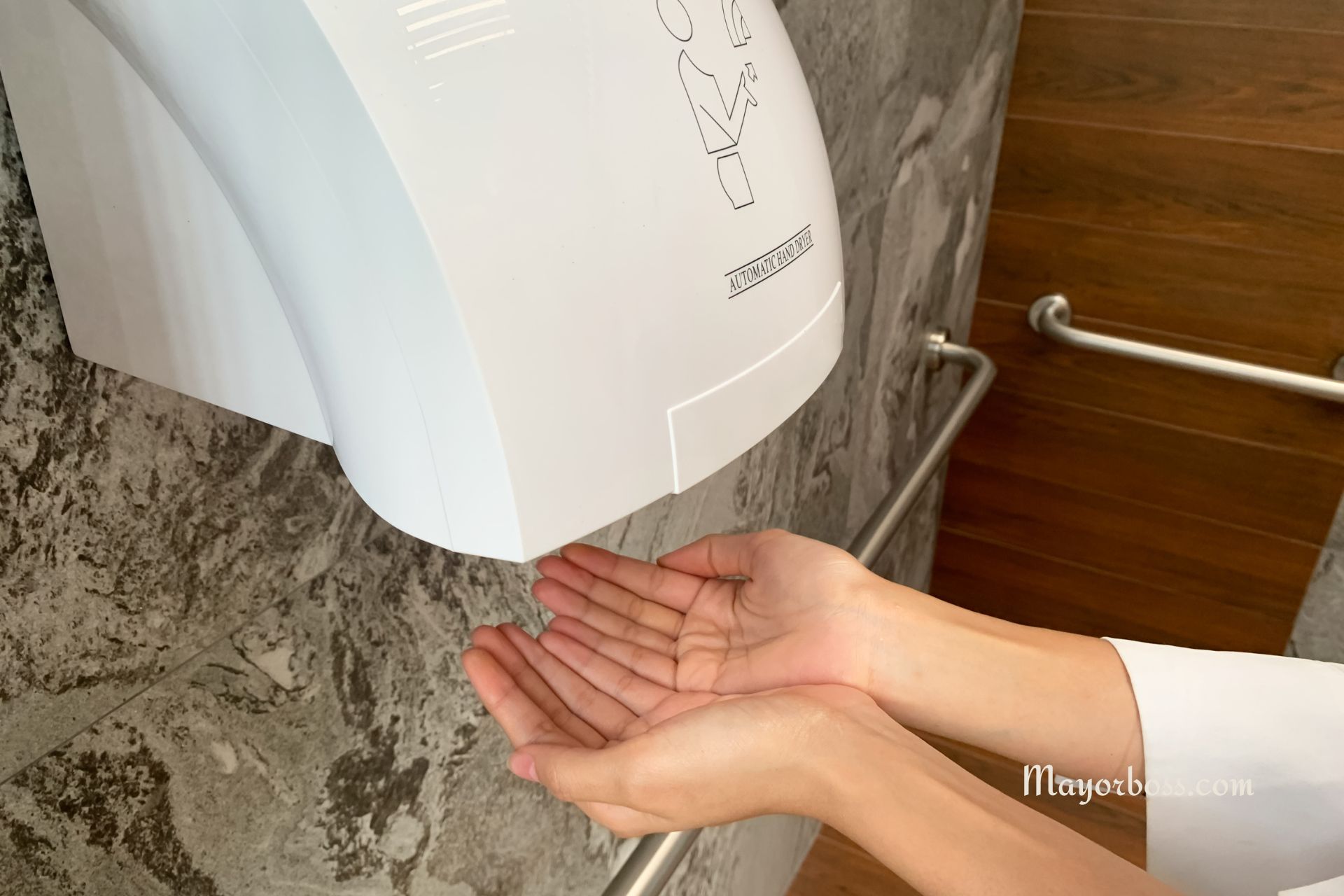Stop Using Public Bathroom Hand Dryers
Public restrooms are hotspots for bacteria. It’s a simple fact. We know it’s important to wash our hands thoroughly after using the facilities, but what about drying them? Should you reach for the paper towels or use those high-speed hand dryers? While they might seem like the more hygienic option, research suggests hand dryers in public bathrooms could be spreading more germs than you think.

How Do Hand Dryers Spread Germs?
Here’s the breakdown of how hand dryers might do more harm than good:
- Aerosolization: Hand dryers work by blowing forceful air to evaporate water. This air can disperse bacteria and viruses that may be lingering on your hands after washing – not just from you but from previous users’ less-than-thorough washing.
- Contaminated Internal Mechanisms: The inner workings of hand dryers might be a breeding ground for bacteria. Moisture from the air, combined with warmth, creates a cozy environment for microbes to thrive. When the air blasts through, it picks up those germs.
- Toilet Plume Effect: Many restrooms don’t have covered toilets. Every flush creates a “toilet plume” – a spray of microscopic droplets that can carry bacteria from the bowl. Some of these droplets may get sucked into the air intakes of hand dryers.
Studies on Hand Dryers
Several studies highlight the risks associated with hand dryers:
- University of Westminster Study: Researchers found that jet air dryers increased bacteria on hands by up to 1300 times compared to paper towels.
- University of Connecticut Study: Studies showed that hand dryers in public bathrooms spread bacteria throughout the room, contaminating nearby surfaces.
- Leeds Hospital Study: After replacing paper towels with hand dryers, a Leeds hospital found increased bacterial contamination in the bathroom and surrounding ward areas.
Paper Towels: The Safer Option
While they may not be the most environmentally friendly choice, the friction of paper towels physically removes bacteria from your hands more effectively than air drying. Plus, they immediately go into the trash, taking the germs with them.
What if There Are Only Hand Dryers?
If paper towels aren’t available, here’s how to minimize your risks when using public hand dryers:
- Wash your hands thoroughly: Proper washing for at least 20 seconds with soap and water is the first line of defense.
- Dry hands partially: Give your hands a little shake and pat dry with any available tissue before using the dryer.
- Minimize dryer time: The less time your hands are under the air blast, the lower your potential exposure to bacteria.
Frequently Asked Questions (FAQs)
1. Are hand dryers ever a good option?
Hand dryers can be more environmentally friendly than paper towels in the long run. They may also be necessary for people with disabilities who find paper towels hard to access. It’s best to assess on a case-by-case basis.
2. Are hand sanitizers a viable alternative?
If available, alcohol-based hand sanitizers are effective at killing germs and can be a good choice if you’re concerned about hand dryer hygiene.
3. What can be done to make hand dryers safer?
Manufacturers could incorporate HEPA filters and UV lights to help purify the air used in hand dryers. Also, restrooms could feature touch-free paper towel dispensers or even both options to accommodate people’s preferences.
Conclusion
While convenient, public restroom hand dryers may not be the most hygienic hand-drying method. If given the choice, opt for paper towels. If hand dryers are all that’s available, be sure to follow proper handwashing techniques and limit your exposure time to the air jets. The best defense against germs is still thorough handwashing, regardless of your drying method!
